Beverly Gray's Blog: Beverly in Movieland, page 29
January 10, 2023
Maryland Is For Movies (in Gene Meyer's new book)
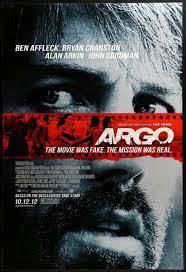
Maryland is an oddly shaped state that coils around our nation’s capital. West Coasters tend to think of it as a series of bedroom communities that house the Washington elite in swanky suburbia. It also, has a Civil War connection, a booming tech industry, and a reputation for freshly caught shellfish. Remember the bumper stickers of some years back? If Virginia Is For Lovers, Maryland Is For Crabs.
When thinking of Maryland, those of us with movie connections focus on Baltimore, birthplace of two writer/directors who’ve made their mark on film history. Barry Levinson set his first four films in Baltimore, reflecting aspects of his own growing-up years in Diner (1982), Tin Men (1987), Avalon (1990), and Liberty Heights (1999). Eventually Levinson moved on to other locales for such hit films as The Natural, the Oscar-winning Rain Man, and the hilariously prescient Wag the Dog.Meanwhile, filmmaker John Waters has always stayed close to his Baltimore roots, in such strange and uproarious cult classics as Pink Flamingos (1972), Polyester (1981), and Hairspray (1988). The last of these was eventually transformed into a Tony-winning Broadway musical, which in turn became a hit film: its peppy opening number is “Good Morning, Baltimore.”
My knowledge of Maryland may be limited, but not so my colleague Eugene L. Meyer, who for years has written about the delights of his home state in Maryland Life magazine and the Washington Post. His new book is Hidden Maryland: In Search of America in Miniature. Roaming the state, Gene uncovers all sorts of Maryland quirks and secrets. What I took away was that even in Maryland, you’re never too far from dreams of Hollywood. Gene warmly profiles the owner of Vera’s White Sands Restaurant, a “Kon Tiki tacky” Polynesian restaurant in Calvert County. Miss Vera (who, alas, recently passed on at age 92) loved to reminisce for her clientele about her glamour days in the Hollywood Hills, down the road from Humphrey Bogart and Lauren Bacall. Gene also writes about tiny Delmar, spanning the Delaware-Maryland border: it was the birthplace of William Alland, who played the reporter doing a post-mortem investigation of Orson Welles’ character in Citizen Kane.
Some genuine Hollywood figures still make their homes in Maryland. A blue-collar section of Montgomery County is the stomping ground of crime novelist George Pelecanos, who won multiple awards for his work as a writer and producer on TV’s The Wire. Pelecanos’s knowledge of the seedy underbelly of cities like Baltimore has led to his involvement with a number of other TV projects, including Tremé (about New Orleans), The Deuce (New York City), and D.C. Noir.
One highlight of Gene’s book is a piece called “Everyman Tony Mendez Comes In From the Cold.” It seems that Mendez, a soft-spoken guy now living in retirement in Washington County’s Pleasant Valley, was once a CIA spymaster so crafty that in 1980, at the height of the Iranian hostage crisis, he managed to extricate six American diplomats from the U.S. Embassy in Teheran. Posing as the production manager for a fake film company, he and his team arrived in Iran purporting to scout locations for a sci-fi flick, to be called Argo. (That title was based on a crude knock-knock joke then making the rounds of his office.) In the course of their “location scout,” Mendez and company managed to smuggle out the six frightened Americans who’d been in hiding for months.
If Argo sounds familiar, it’s because in 2012 an actual Hollywood film was made, chronicling Mendez’s exploits. He was played on screen by Ben Affleck, who also directed.
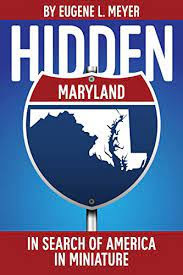
January 6, 2023
Talking About “Women Talking”
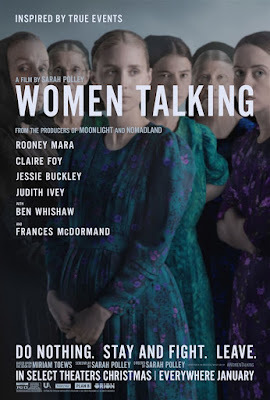
Let’s face it: a film called Women Talking sounds like a gabfest. It’s easy to imagine a screen full of bitchy wives, making catty comments over cocktails. It suggests an update of The Women, the 1939 George Cukor opus in which the ladies who lunch struggle to grab power as well as one another’s husbands.
The title Women Talking turns out to be hugely accurate for the new film directed by Canadian auteurSarah Polley But this is hardly a frivolous exercise about soignée ladies vying for social power. Polley’s script adapts a 2018 novel which itself is based on what happened within an isolated Canadian Mennonite community that had settled in Bolivia. In Polley’s film, the location of the settlement is left obscure. But what’s crystal-clear is that these women, raised to live modest, conservative, devoutly religious lives, suddenly have no choice but to make a decision that may overthrow everything they believe.
Watching the film, it’s easy at first to think that these women lived long ago. Their drab frocks and head coverings, along with their clean-scrubbed faces, suggest an era much earlier than our own. And the fact that they can neither read nor write strongly argues that this story unfolds, perhaps, back in the nineteenth century, when rural communities stuck to subsistence farming, and women, in particular, weren’t always granted opportunities for education. But a few passing references within the dialogue—to antibiotics, for instance—remind us that this tale unfolds in much more recent times. Amazingly, the actual story took place circa 2011.
It's a story that’s sordid in the extreme. Though the adult males in this community are never seen, we learn that some among them are guilty of behavior that can only be called heinous. It has become their practice to drug the community’s girls and women with cattle anesthetic, then rape them in their beds. Inevitably, some of the women have become pregnant; most have suffered deep psychological distress. But though several of the culprits have been caught and jailed by local authorities, the community is in process of bailing them out, and requiring the defiled women—on religious grounds—to forgive.
Under these dire circumstances, a small clutch of women meet secretly in a hayloft to make a fateful decision: should they knuckle under to the rules set by their all-male elders? Should they stay put and fight the patriarchy? Or, gathering their small children, should they pack up and leave the only world that most of them have ever known?
Polley, who was once a young actress known for challenging parts in films like The Sweet Hereafter, was talked into directing by Frances McDormand, who functioned as producer here while also playing a small but key role. At age 43, and with three young children at home, Polley believed her directing career was on hold when McDormand approached her and wouldn’t take no for an answer. Given her own domestic situation as well as the sensitivity of the subject matter with which she was dealing, Polley strove hard to make her set as accommodating as possible. Her cast was treated gently, as were the many child actors the story required. Key behind-the-scenes positions were filmed almost entirely by women, and the cast (including big names like Rooney Mara, Jessie Buckley, and Claire Foy) soon bonded into the tight-knit family group they were intended to be. Kudos to Ben Wishaw as the sole sympathetic male included within the cast.
This somber film was not one I could love wholeheartedly, but my respect for it runs deeps.
January 3, 2023
The Academy Museum: Some Exhibits You Can’t Refuse
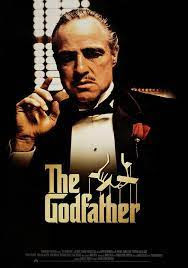
So what’s new at the Academy Museum, that Wilshire Blvd. monument to the art and science of filmmaking? The museum has always promised to evolve over time. Now that it’s been open for more than a year, several exhibits have departed and been replaced by others. In the space formerly occupied by an in-depth look at The Wizard of Oz, there’s now an even more impressive focus on The Godfather. Writer-director Francis Ford Coppola, bless him, has apparently documented his every impulse regarding the first Godfather film in particular. For me, as a teacher of screenwriting, it was a thrill to see a notebook made up of the pages of Mario Puzo’s bestselling novel, with Coppola’s scribblings marking his evolving plans for bringing Puzo’s text to the screen through dialogue and visual cues.
In the Godfather section, there are also film clips aplenty. Some of my favorites showcase the various actors auditioning for the roles of Michael, Kay, and Don Vito Corleone. I learned that Coppola had Al Pacino’s look in his head from the start, even though his studio backers tried to hint that a blond like Robert Redford could be perceived as northern Italian. I also learned the lengths to which Coppola had to go in assuring his bosses that the often difficult Marlon Brando would be worth hiring for the title role. And costume sketches show how the creative team tried to set Michael’s WASP-y lady love apart from those with Italian roots by way of costuming and hair color. The importance of ambient sound is highlighted by a long clip from a scene in a Bronx trattoria that starts out amiably and ends with a brutal double murder.
A few steps from the large Godfather exhibit is the small gallery devoted to costume design. I was surprised and pleased to see that the costumes I had remembered being on display (like Marilyn Monroe’s glittery red gown from Gentlemen Prefer Blondes and the bizarre floral raiment from Midsommar) had been replaced by alternatives, like the black velvet young-boy suit worn by Mary Pickford as the star of Little Lord Fauntleroy. There are also new video interviews featuring costume designer Anne Roth, makeup department head Joel Harlow, and hair designer . I liked Roth’s steely insistence that she doesn’t design to please celebrities. Even though a major star may hate the color yellow, Roth goes ahead with her artistic plans if it’s determined that yellow is the character’s favorite color. Meanwhile Harlow explains in detail how and why he created exotic head tattoos for Black Panther. And Toussieng reminisces about how, to suggest a sort of topiary look for Edward Scissorhands, she invented radical cuts (and wigs!) not only for human actors but also for the pooches cast in the film.
My main goal in visiting the museum was to see the massive new full-floor exhibit called “Regeneration: Black Cinema 1898-1971.” I learned a lot in the first few rooms about how Black cinema evolved out of Vaudeville, featuring such stars as Bert Williams. There’s info about the first Black actor to play Uncle Tom in an early version of Uncle Tom’s Cabin (formerly the role had been taken by white actors in blackface.) And a stunning installation reminds us that in many local movie theatres, “colored” audiences were required to watch from the balcony. The heart of the exhibit is the period, much loved by my parents, when musically gifted Black performers were being featured. Who knew that there once were “soundies,” in which musicians like Fats Waller performed their latest hits in two-minute film clips?
December 30, 2022
Avatar 2: The Way of Cameron

Congratulate me! I have survived a trip to Pandora, and am only slightly water-logged. Yes, I just sat through all three hours and twelve minutes of Avatar: The Way of Water, staying awake most of that time. Never have I ever seen a movie that is both so beautiful and so unrelentingly convoluted. I noticed five people (including director James Cameron) listed in the opening credits as authors of the film’s story. This means five people helped sort out the plotline of this Avatar sequel before three of them went on to collaborate on the actual screenplay. Maybe this authorship-via-committee approach is why we’ve got a “something for everyone” storyline, crammed full of heroics, mysticism, family feelings, outside threats (from, of course, evil earthlings), and covert ecological messages about saving our home planet.
I’ve a hunch the writers fully expected us to re-watch the original Avatar the night before viewing this sequel. Avatar was first released, to thunderous acclaim, in 2009, and 13 years later most of us are a bit hazy about the circumstances on Pandora, aside from the fact that Jake Sully, an American military guy who’s among those invading the pristine little planet, eventually goes native. In the followup,.I was totally baffled by what Sigourney Weaver was doing on camera in that one scene, and couldn’t fathom her apparently maternal connection with one of Sully’s Na’vi children. And why does the sequel’s #1 human antagonist, the thoroughly nasty Colonel Miles Quaritch, look big and blue (like the Na’vi) throughout the action? Wikipedia explains it this way: Quaritch is “a human who led the paramilitary division of the RDA in their conflict with the Na'vi. After being killed by Neytiri in the first film, he is one of several RDA soldiers resurrected as recombinants, described as ‘avatars embedded with the memories of human[s].’”To which I can only say, “Huh?”
But let’s focus on the film’s strengths. The Na’vi, as we discovered in the first Avatar, are fabulous beings. They’re tall, sleek, and noble. Though their anger can be fierce, they’re hardly Blue Meanies. If left to their own devices, they are peace-loving, devoted to the natural world and to one another. And they look absolutely regal (as well as rather sexy) in pretty much no clothing at all. They’re a triumph of Cameron’s use of motion capture to transform human actors into otherworldly beings. By using the latest in technology, he can have his characters effortlessly do fabulous stunt work, while also interacting with unearthly sea creatures that boggle the viewer’s mind.
In its undersea sections this Avatar is at its best. Cameron, it seems, is passionate about the ocean. He’s used it as backdrop for movies like The Abyss and (of course) Titanic, not to mention several documentaries. And he’s had his personal ocean adventures, becoming in 2012 the first person ever to do a solo descent of the Mariana Trench, the deepest spot in the earth’s waters. While making Avatar: The Way of Water, he required most cast members to become adept at free diving, so that his cameras could capture their movement in the briny deep as well as on land.
James Cameron got his start in moviemaking as a very novice art director on Roger Corman’s Battle Beyond the Stars. The goal at Corman’s New World Pictures was to make films fast and cheap, using tricks like spray-painting McDonald’s hamburger boxes silver and tacking them up to line a spaceship’s walls. Corman films are also notably short. Cameron learned a lot from Roger, but then obviously went his own way.
December 27, 2022
Peeling Back a Glass Onion
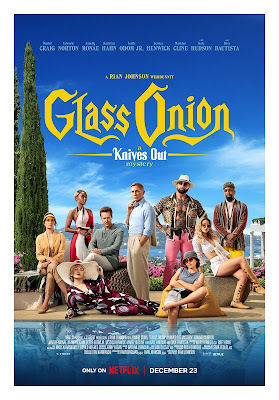
I was excited when the new Knives Out film was announced. It played briefly in cinemas around Thanksgiving, creating a box-office flurry. So eager, apparently, was the public to watch the further adventures of super-sleuth Benoit Blanc that it was said producers had missed a lucrative bet by withdrawing the film from theatres so as to release it on Netflix starting December 23.
I personally waited until December 25 to screen it in my living room, as a reward for surviving a large family party. Of course I was waiting for something with the wit of the original. Aside from Daniel Craig’s droll portrayal of a rather effete N’Orleans private eye, Knives Out had a twisty plot, featuring a group of greedy relatives all perched like vultures over the corpse of their very wealthy and very dead uncle. With the cast filled out by such skilled players as Christopher Plummer (as the dead man), Toni Collette, Michael Shannon, and a hilariously bitchy Jamie Lee Curtis, it was clear from the start that the audience was in good hands. There was also a new screen discovery, Cuban-born Ana de Armas, as a sympathetic counter-balance to all the venality around her. Playing Plummer’s conscientious nurse, she is someone we can root for, even when it begins to seem that his passing is a result of her carelessness. Amid all the film’s crass characters, I liked the fact that our center of gravity was a young working-class woman with both a conscience and a mother whose undocumented status made her vulnerable to outside pressures.
Writer/director Rian Johnson also showed off in Knives Out his fondness for tricks and word games, one of which tickled me belatedly. There’s a throwaway driving scene in which Blanc starts crooning a lyric from Stephen Sondheim’s Follies: “The sun comes up/ I think about you/ the coffee cup/ I think about you.” It was only later that I realized this snatch of song wittily points to the film’s ending, and a very distinctive coffee cup. Aha!
So what about Glass Onion: A Knives Out Mystery? It too is full of jokes and pop culture references. Some world-famous paintings play an ironic role in the story, and some movieland royals (most notably Hugh Grant) show up in small roles. Much has been made of the fact that both the late Stephen Sondheim and the late Angela Lansbury briefly play themselves on a Zoom conference call with Blanc. Kareem Abdul-Jabbar is there too, and Serena Williams pops up for several amusing seconds.
All of this is fun, and of course there’s a mystery to be solved by the ever-perceptive Blanc. Here’s the problem: though there are gags and twists aplenty, the Glass Onion story lacks any semblance of heart. Yes, we can enjoy the fabulous Greek island sets, and of course the cast is once again star-studded, featuring Kate Hudson, Leslie Odom Jr., Kathryn Hahn, and particularly Edward Norton as a billionaire tech bro who owns these palatial surroundings. They’re supposedly old friends with complicated ties to one another, but as a group they’re not nearly as interesting (or as well-explored) as the feuding family circle in Knives Out. , in a more challenging role, fulfills the Ana de Armas function by being someone with whom we can sympathize, but her plight—cleverly introduced by Johnson—lacks the urgency we felt in the previous movie.
As for Benoit Blanc himself, we know from the start that he’s the world’s most famous detective. So this time we don’t have the fun of discovering just what he’s capable of.
December 23, 2022
Getting into the Holiday Spirit with “Elf”
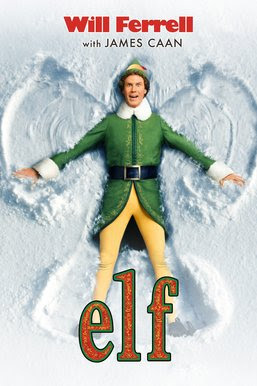
A recent airline trip gave me the opportunity to catch up with Elf, the 2003 comedy that is widely viewed as a holiday classic. I’ve heard the gripe that in all of his films Will Ferrell plays the exact same role. Whether he’s portraying an anchorman, a NASCAR driver (in Talladega Nights) or an Olympic figure skater (in Blades of Glory), he’s always the same lovable doofus, That being said, the role of an oversized elf, sent forth from Santa’s workshop to find his real father among the office towers of New York City, fits him as snugly as a pair of yellow tights. I give Ferrell full credit: he’s convincingly naïve, convincingly so much in love with the Christmas spirit that he’s about to burst.
The truth,, of course, is that Ferrell’s Buddy is not a genuine elf. He came to the North Pole as a human baby, much in need of family, who somehow crawled into Santa’s sack on Christmas Eve, and was lovingly raised by Papa Elf.. Papa Elf, who supplies the film’s droll narration, is played by Bob Newhart with deadpan wit, and the other casting choices are equally inspired. The gruff but lovable Santa is Edward Asner. The grinch of the piece, Buddy’s real (though unsuspecting) human dad, is played by James Caan. Amusingly, he’s a publisher of children’s books, though one who seems to have little affection for either books or children. (Buddy, of course, will eventually straighten him out, helping him advance his career while also encouraging him to appreciate his family.) As always, Mary Steenburgen is a warm presence, here playing Caan’s wife. In a remarkable example of holiday cheer, she welcomes Buddy into her home, never stooping to interrogate her husband about having fathered a child with a previous love. As Buddy’s eventual romantic interest, Zooey Deschanel is as adorable as ever, though turning her into a blonde doesn’t make for more fun. The film also shows off Deschanel’s strong singing voice, both in a delicately handled shower scene (don’t ask!) and over the end credits, where she shares a jazzy version of “Baby, It’s Cold Outside” with Leon Redbone.
Because Elf is a wee bit naughty as well as nice, there’s some amiable satire of Christmas, American-style. The department store where Deschanel’s character toils and Buddy is mistaken for part of the Christmas décor is of course a ripe target. Buddy provokes mayhem when he loudly accuses the store’s Santa of not being the real deal and pulls off his fake beard, with unfortunate results. But the funniest single gag in the film involves a crisis moment in which Caan’s publisher-character tries to hire a bestselling children’s book author to write a potential best-seller. On the phone, this famous author sounds adult, imperious, and impressive. So as not to spoil the surprise of who was cast in this cameo role, let me just say that his presence elicits from Buddy (at the office visiting Dad) exactly the wrong reaction. The scene is genuinely hilarious
Personally, I am mostly allergic to Christmas movies that promise miracles of comfort and joy based on vague and sentimental religious belief. Elf works for me partly because it merrily sidesteps anything to do with Jesus in the manger. It’s amusing (and perhaps apt) that so many people involved in the making of Elf are Jewish, including its initial screenwriter (David Berenbaum) and director (Jon Favreau). And the notion of Ed Asner as Santa is a hoot. One set even includes a menorah, a nice ecumenical touch at “the most wonderful time of the year.”
December 20, 2022
Telling the Woman’s Side of the Story: “She Said”
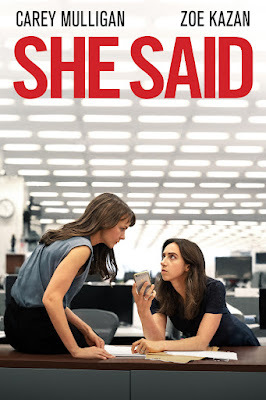
The first time I heard of Harvey Weinstein was back in my Roger Corman days, when Harvey and brother Bob formed Miramax (named after their parents) to produce and distribute international art films. Roger had paved the way by showing that serious foreign-language films like Ingmar Bergman’s Cries and Whispers and Fellini’s Amarcord could make money in U.S. markets. When Miramax came along and upped the ante, Roger went back to genre flicks. Miramax, meanwhile, distributed such offbeat hits as Pulp Fiction and The Crying Game, while also entering the production field. The company eventfully nabbed a Best Picture Oscar for 1998’s Shakespeare in Love, while being involved with many other classy projects.
If Miramax sealed Harvey Weinstein’s reputation as a strong, hands-on producer, it took a while for the world to discover that Weinstein was hands-on in a more unfortunate sense. In 2020 his apparently insatiable demand for sexual favors from actresses and staffers earned him a 23-year prison term in New York, and a Los Angeles jury has just convicted him of heinous crimes. So it’s no secret today that Weinstein is capable of sexual harassment, even rape, But his behavior was still an industry secret back in 2017 when two female reporters on the New York Times, Jodi Kantor and Megan Twohey, began investigating rumors of his mistreatment of women. Their groundbreaking articles showed the world Weinstein’s dark side, and encouraged scores of additional women to come forward. Eventually Kantor and Twohey turned their reporting into a 2019 book, She Said: Breaking the Sexual Harassment Story That Helped Ignite a Movement. And now that book is a movie, with a strong cast led by Zoe Kazan and Carey Mulligan.is IHis in
If you’ve ever had a yen to be an investigative journalist, you’ll find She Said both fascinating and daunting. The film makes clear that reporters spend most of their days (and nights) far from their laptops. Before they can tap out the stories that will change people’s lives, they devote days, weeks, even months to tracking down cold leads. They’re forever phoning potential informants who hang up on them, and traveling great distances to have doors slammed in their faces. Somehow, even in the face of rejection, they know what to say, and are able to remain sympathetic to victims who just can’t bring themselves to tell what they know. Which means this two-hour film seems very long indeed, as we watch Jodi and Megan doggedly try to overcome all obstacles that will keep them from uncovering the truth.
After watching the two cajole members of Weinstein’s inner circle over cups of coffee and glasses of wine, we see them wearily trying to keep their home fires lit. In real life both women have husbands who are themselves involved in writing professions (one a columnist, one a literary agent). In the film, all we know is that these guys are remarkably sympathetic to their wives’ overtime work obligations, despite the fact that there are young children who need attention. (Kantor’s spouse takes it in stride when, on a day’s notice, she jets off first to California and then to London in the line of duty.) It’s a far cry from the traditional Hollywood movie in which the man leaves on an exciting but difficult mission, while his wife stays home, worrying about his safety and keeping the kids in line.
When the breakthrough moments do come, and when there’s finally enough on-the-record material to print a Weinstein exposé, we do feel a real sense of accomplishment. Too bad it’s such a slog to get there.
December 15, 2022
Raising Cain: 1981’s “The Postman Always Rings Twice”

Watching 1946’s The Postman Always Rings Twice set me off on a path you might call obsessive. First I checked out the 1981 remake starring Jack Nicholson and Jessica Lange, notorious in its day for its frank sexuality. Then, to better understand the source of it all, I read James M. Cain’s pulp novella from 1934.
To be honest, the 1981 remake didn’t do much for me. Yes, that initial sex scene is startling in its brutal power, but it gave me far more than I needed in setting the scene for what was to follow. There’s only so much of a sexually voracious Jack Nicholson that someone like me can take. His nearly devouring Jessica Lange in his brutal embrace just made me squirmy (and certainly made me wonder about her character’s basic intelligence, since she seems to welcome it). Maybe, I figured, sado-masochism works better on the page than on the screen. The great Sven Nykvist’s cinematography was a marvel, though, in keeping the couple’s private parts completely hidden even while clothes were ripped away.
Along with Nykvist, who was Ingmar Bergman’s longtime cinematographer, the remake attracted a host of top-grade professionals. The director was Bob Rafelson (Five Easy Pieces), and none other than playwright David Mamet adapted Cain’s work for the screen. Part of the hype at the time of the film’s release was that it was far closer to Cain’s original work that the sanitized Production Code version of 1946. That’s why I wanted to understand what Cain was up to.
No question: Cain in this work closely aligns sex with death. The novella contains at least three major scenes of erotic connection between the narrator, Frank, and his boss’s wife, Cora. In the first, coming onto Cora in the kitchen of her husband’s roadside lunchroom, he says. “I took her in my arms and mashed my mouth up against hers.” She’s the one who pleads for him to bite her . . . and he does: “I sank my teeth into her lips so deep I could feel the blood spurt into my mouth. It was running down my neck when I carried her upstairs.”
The second big scene of passion occurs immediately after they manage to maneuver her soused immigrant husband (scornfully referred to as The Greek) over the side of a California cliff. To suggest that the car crash is pure accident, Frank roughs up Cora by punching her in the eye. Next thing you know, they are locked in each other’s arms. And Frank admits that “Hell could have opened for me then, and it wouldn’t have made any difference. I had to have her, if I hung for it.” Then he adds, “I had her.”
For all that the film remake tries to capture Cain’s tone, it just doesn’t pull us along in the way that Frank’s on-the-page narration does. Yes, there are the same plot twists and turns, including some sneaky legal wranglings that briefly have the lovers at each other’s throat. And the remake also includes the novella’s bizarre interlude in which Frank, separated from Cora, takes up with a dame who raises pumas and other exotic jungle cats. (The original film had him tempted by a much more commonplace lady.) On screen this cat-woman is played, apparently in the buff, by Anjelica Huston, Nicholson’s real-life main squeeze at the time.
One more thing the remake doesn’t have is the novella’s powerful ending, in which we learn for the first time just where Frank is as he tells us his tale. It’s the capper we need to understand everything.
December 13, 2022
Paris (Texas) When It Sizzles
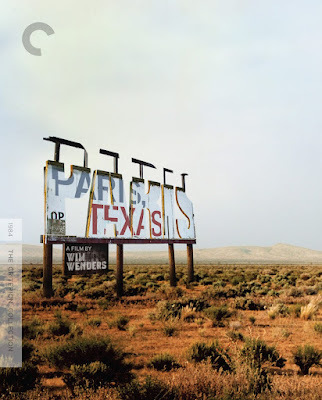 I’ve discovered that there really is a place called Paris, Texas. It’s in the northeast east of the state, just spitting distance from the Oklahoma border, and in 2020 its population was 24,000 souls. But in Wim Wenders’1984 film—financed and shot by an international consortium—Paris, Texas is more of a state of mind. It’s one of the first phrases uttered (well, sort of) by a down-and-out drifter to the brother who’s come to rescue him after a four-year absence. And it’s a closely-guarded snapshot of a patch of desert scrub that looks to be in the middle of nowhere. Paris, Texas, eventually, takes on the aura of a dream-state in which nostalgia fuses with a joyous sense of love and connection and future promise, at least for some.
I’ve discovered that there really is a place called Paris, Texas. It’s in the northeast east of the state, just spitting distance from the Oklahoma border, and in 2020 its population was 24,000 souls. But in Wim Wenders’1984 film—financed and shot by an international consortium—Paris, Texas is more of a state of mind. It’s one of the first phrases uttered (well, sort of) by a down-and-out drifter to the brother who’s come to rescue him after a four-year absence. And it’s a closely-guarded snapshot of a patch of desert scrub that looks to be in the middle of nowhere. Paris, Texas, eventually, takes on the aura of a dream-state in which nostalgia fuses with a joyous sense of love and connection and future promise, at least for some. Wenders’ movie never literally takes the viewer to Paris, Texas. But his European camera-eye (highlighting the work of the brilliant Dutch cinematographer Robby Mūller) deeply loves the state’s wide-open spaces, using natural light to capture them in all their glory. The road-trip aspect of the narrative allows Wenders and Mūller to explore tumble-down towns, seedy motels, and the desert itself. But big cities are part of their vision too. Los Angeles, the end of the road for some aspects of the story, has never looked so beautiful, with its hillside suburban homes basking in the hazy west coast sunlight. And the skyscrapers of Downtown Houston glow in the urban dusk.
Because Wenders’ canon was largely unknown to me, I expected Paris, Texas to be arty, mostly a feat of cinematography, with human relationships getting short shrift. How wrong I was! The raggedy man painfully inching his way across the desert in the opening frames turns out to have a complex and deeply moving backstory. Some two hours later, we finally find out what’s troubling him, and all the pieces of an emotional storyline click into place. The drifter, a native Texan named Travis, is played by classic Hollywood character actor Harry Dean Stanton in a bravura performance that allows him to register all the emotions: pain, anger, whimsy, gratitude, regret. Others in the international cast include Dean Stockwell as Travis’s good-hearted brother, Aurore Clêment as that brother’s deeply maternal wife, and eight-year-old Hunter Carson (son of actress Karen Black and screenwriter L.M. Kit Carson) in a movingly natural portrayal of a boy abandoned by his birth parents years before. Late in the film there’s an important appearance by Nastassja Kinski as a fragile-looking blonde in a peepshow booth. For a while her Texas drawl, belying her German roots, had me completely fooled. But the key scenes in which Travis shares his story with her from the far side of the glass have a visual and emotional power I will not soon forget.
The filmmakers involved with this project are an impressive bunch. Second unit was shot by France’s Claire Denis, who went on to become a film director of note. Allison Anders, another significant director in the making (see Gas Food Lodging), served as a production assistant. The original screenplay is by Sam Shepard, the Oscar-nominated actor who as a playwright can be considered a poet of wide open spaces. (L.M. Kit Carson is credited with the adaptation.)
All in all, this is a motion picture worth seeing and savoring, for its sensitive performances as well as its visual beauty. I’ll give the last word to a fan who posted on IMDB: “Perhaps each person has a film -- usually a masterpiece -- which affects him or her so strongly that it is beyond description. This is mine.”
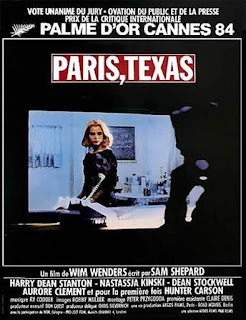
December 9, 2022
Finding Love (Actually) by Believing in “Yesterday”
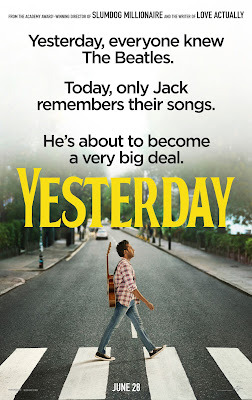
‘Tis the season for Richard Curtis. A recent Los Angeles Times article singled out 2003’s Love Actually, written by Curtis and also his debut as a film director, for being essential December viewing. And so it is, if you enjoy British cinema stars (Hugh Grant! Emma Thompson! Bill Nighy! Mr. Bean!) searching for—and finding—love amid snow flurries, Christmas parties, and other holiday merriment. I first fell for Curtis in 1994, when he took the concept of a wedding movie and quadrupled it. Four Weddings and a Funeral had it all: lots of flowers, lots of bridesmaids in poufy dresses, lots of lovelorn singles looking for their special someone. And, of course, there was the funeral, reminding us that, amid all the saccharine happily-ever-after, love sometimes comes to a permanent end.
Curtis is big on concepts. (Call them gimmicks if you must.) For instance, there’s 1999’s Notting Hill, which posits that a film star at the height of her international fame (Julia Roberts) makes a romantic connection with a shy, quirky London bookshop owner (High Grant). Inevitably, the paparazzi descend, and . . . well, the course of true love never did run smooth. Less of a megahit but equally charming is 2013’s About Time, starring Dombnall Gleeson, Rachel McAdams, and the invaluable Bill Nighy, in a romantic film that also encompasses family relationships by adding a dash of time travel to the mix.
More recently, Curtis has branched into film and TV adaptations and sequels (see Doctor Who, War Horse, as well as several Bridget Jones and Mamma Mia films), without doing much in the way of originals. But he did try something rather new in 2019, although it too is an adapted version of someone else’s concept. Yesterday(2019) is based on a story by TV writer/producer Jack Barth, best known for his work on The Simpsons. (Barth who gets a story credit on Yesterday, apparently has griped that Curtis wrongly claims authorship of some of his own plot devices. But, at age 62, Barth became perhaps the oldest person in Hollywood to see his first screenplay produced, after 25 unsuccessful tries, so I’d say he’s doing all right.)
So what’s Yesterday about? The title is an homage to the Paul McCartney song we all know and love. But in the world of the film, a young British singer-songwriter who’s recovering from a strange road accident suddenly discovers he’s alone in the universe in having any recollection of the Beatles. This makes it easy for him to claim that the entire Beatles canon is his own work, and fame and fortune soon follow. For a while he enjoys the ride, but he can’t help feeling guilty. And his growing celebrity within the music industry threatens his relationship with the nice young woman who’s loved him for years. You can probably guess the ending.
Curtis left the directing of Yesterday to the talented Danny Boyle, an Oscar winner for Slumdog Millionaire. Perhaps it was Boyle’s experience in the Indian sub-continent that led him to cast a Brit of Indian descent, Himesh Patel, as his Yesterday leading man, in a film that was not at all about race and ethnicity. A nice bit of diversity, that. The cast also includes pop star Ed Sheeran, nicely playing a version of himself. But the real star is the Beatles’ greatest hits: the rumor is that some $10 million was paid for the right to use classic songs from their catalogue. The Fab Four and their survivors have signaled their love for the film, including a surprise cameo I will not divulge.
Beverly in Movieland
- Beverly Gray's profile
- 10 followers



